
Lincoln: The Man Who Saved America, which was published by Fall River Press in 2017, has been named “Best Lincoln Biography for Young People” by Tom Peet and David Keck, authors of Reading Lincoln.

I’m back from my post-manuscript submission break. I took a week to decompress, which turned into a week of long-haul driving and visiting with family. I hadn’t seen my immediate family for over a year. I also met up with extended family and one friend I hadn’t seen since I was about 20 (in one case, probably a young teenager).
Immediately upon my return (driving through a tropical storm, no less), I ordered the Peet and Keck book. I had bought the first edition when it came out several years ago. The current volume is listed as the 3rd Edition, but Tom tells me that this edition as actually been revised six times since it was released. It now is a whopping 766 pages containing 550 reviews of books about Abraham Lincoln. I read a ton of Lincoln books – 25 to 35 a year – but this volume is an amazing achievement in itself. Unlike some reviewers who skim books, Peet and Keck read deeply into each book and write insightful reviews. I can appreciate their effort since I take copious notes on most Lincoln books I read and write book reviews for The Lincolnian (the Lincoln Group of DC newsletter) and the Lincoln Herald, as well as for Civil War Times and other outlets.
In their review, Peet notes that with the book I have “accomplished something never done before,” adding that I have “created the Swiss-army knife of Lincoln biographies and much, much more.” In reaching their recommendation as the best biography for young people, Tom notes “there are pictures, pictures, and more pictures. Hundreds of them (paintings, lithographs, newspapers, maps, tintypes, sketches).” He ends the review with:
“There is nothing like this book on the market and I highly recommend it.”
Tom also notes in his review a few lines that he thinks could be controversial, and indeed, two or three readers have referenced the same short paragraph near the end of the book. I’ve addressed this point before, and plan to revisit it a future post, but Tom notes that what I argue is “objectively true.”
The Peet and Keck volume, of course, reviews more than my book. With over 1,500 Lincoln books on my shelves as I write this, I’m eager to see how many they have reviewed that I’m missing. This volume is a wonderful resource to check before buying new Lincoln books. Tom mentions that its size has reached a maximum capacity for binding, but I’m hopeful he’ll start a new volume containing only books not already included in this edition. He can include my forthcoming book, tentatively due out in February 2022. More on that soon.
David J. Kent is the author of Lincoln: The Man Who Saved America. His newest Lincoln book is scheduled for release in February 2022. His previous books include Tesla: The Wizard of Electricity and Edison: The Inventor of the Modern World and two specialty e-books: Nikola Tesla: Renewable Energy Ahead of Its Time and Abraham Lincoln and Nikola Tesla: Connected by Fate.
Follow me for updates on my Facebook author page and Goodreads.



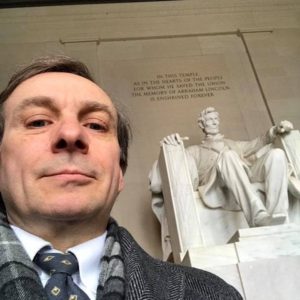 I often check
I often check 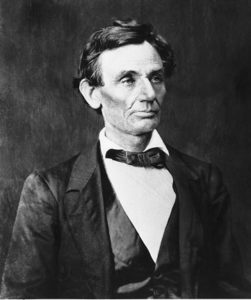 On June 23, 1857, Abraham Lincoln sued the Illinois Central Railroad. The Railroad had hired him on many occasions to defend their interests, but on this occasion they balked at the unusually high fee Lincoln charged – $5000. Lincoln had served the railroad well over many years, often taking limited fees, for example he had drawn only $150 for a year’s worth of work encompassing “at least fifteen cases (I believe one or two more) and I have concluded to lump them off at ten dollars a case.” This time, the McLean County Tax Case, he wanted to get paid the value of the work.
On June 23, 1857, Abraham Lincoln sued the Illinois Central Railroad. The Railroad had hired him on many occasions to defend their interests, but on this occasion they balked at the unusually high fee Lincoln charged – $5000. Lincoln had served the railroad well over many years, often taking limited fees, for example he had drawn only $150 for a year’s worth of work encompassing “at least fifteen cases (I believe one or two more) and I have concluded to lump them off at ten dollars a case.” This time, the McLean County Tax Case, he wanted to get paid the value of the work.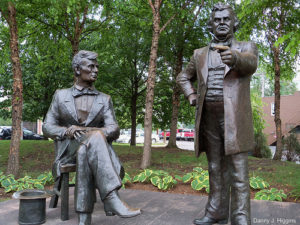 Abraham Lincoln lost his 1856 Senate campaign, but in 1858 he had another opportunity to run for Senate, this time against his old rival Stephen A. Douglas. In June Lincoln gave what is perhaps one of his most cited oratories, the “House Divided” speech. Once again he warned that the Kansas-Nebraska Act had opened the country to expansion of slavery—not just in the territories, but throughout the nation. Beginning with a paraphrased line from the Bible (Mark 3:25), Lincoln notes:
Abraham Lincoln lost his 1856 Senate campaign, but in 1858 he had another opportunity to run for Senate, this time against his old rival Stephen A. Douglas. In June Lincoln gave what is perhaps one of his most cited oratories, the “House Divided” speech. Once again he warned that the Kansas-Nebraska Act had opened the country to expansion of slavery—not just in the territories, but throughout the nation. Beginning with a paraphrased line from the Bible (Mark 3:25), Lincoln notes: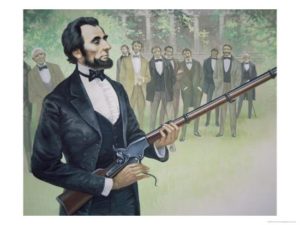 Abraham Lincoln had an interest in technology, and on June 10, 1861 he sees a new weapon he likes. I write about this and other incidents in
Abraham Lincoln had an interest in technology, and on June 10, 1861 he sees a new weapon he likes. I write about this and other incidents in  At 9:10 am on Monday, June 3, 1861, Stephen A. Douglas died in Chicago at the age of forty-eight. Thus ended a remarkable life, both as a leader in the antebellum Democratic party and as a foil to Abraham Lincoln’s rise. Douglas had fallen ill weeks before while headed back to Illinois to lobby for Democratic support of the newly elected President Lincoln once the Civil War started. Lincoln immediately directs that government offices be close on the day of the funeral and that the Executive Mansion (aka, the White House) and departments be draped on mourning for thirty days. On June 4th, Secretary of War Simon Cameron issues a circular to Union armies, announcing “the death of a great statesman…a man who nobly discarded party for this country.”
At 9:10 am on Monday, June 3, 1861, Stephen A. Douglas died in Chicago at the age of forty-eight. Thus ended a remarkable life, both as a leader in the antebellum Democratic party and as a foil to Abraham Lincoln’s rise. Douglas had fallen ill weeks before while headed back to Illinois to lobby for Democratic support of the newly elected President Lincoln once the Civil War started. Lincoln immediately directs that government offices be close on the day of the funeral and that the Executive Mansion (aka, the White House) and departments be draped on mourning for thirty days. On June 4th, Secretary of War Simon Cameron issues a circular to Union armies, announcing “the death of a great statesman…a man who nobly discarded party for this country.”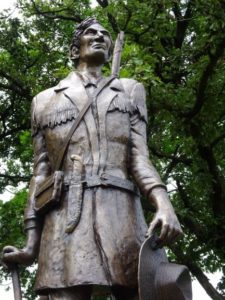 On May 27, 1832, Captain Abraham Lincoln’s company is mustered out of U.S. service by Nathaniel Buckmaster, Brigade major. Lincoln writes the muster roll of his company, certifying that remarks on activities of several members are accurate and just. He then enrolls in company of Capt. Elijah Iles for service in 20-day regiment.
On May 27, 1832, Captain Abraham Lincoln’s company is mustered out of U.S. service by Nathaniel Buckmaster, Brigade major. Lincoln writes the muster roll of his company, certifying that remarks on activities of several members are accurate and just. He then enrolls in company of Capt. Elijah Iles for service in 20-day regiment.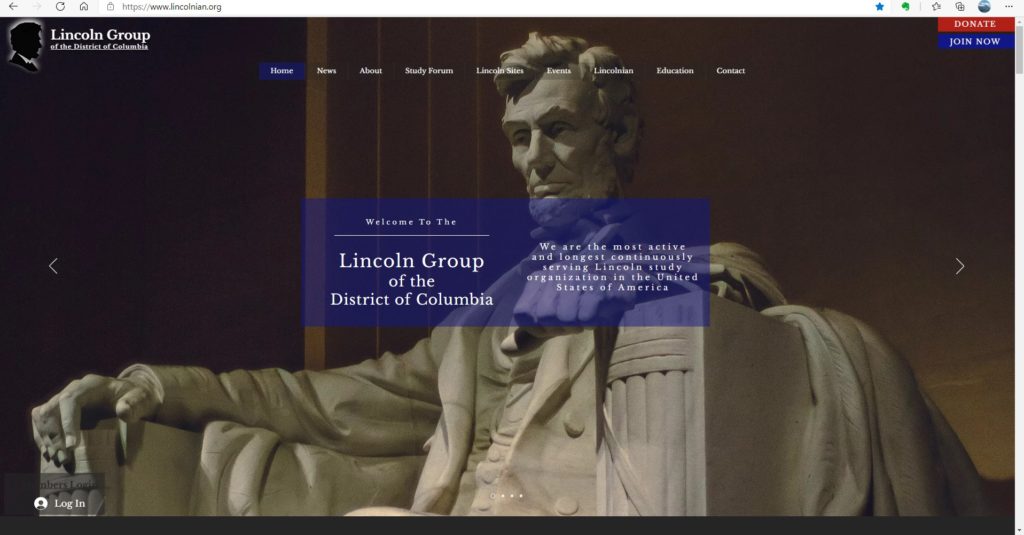

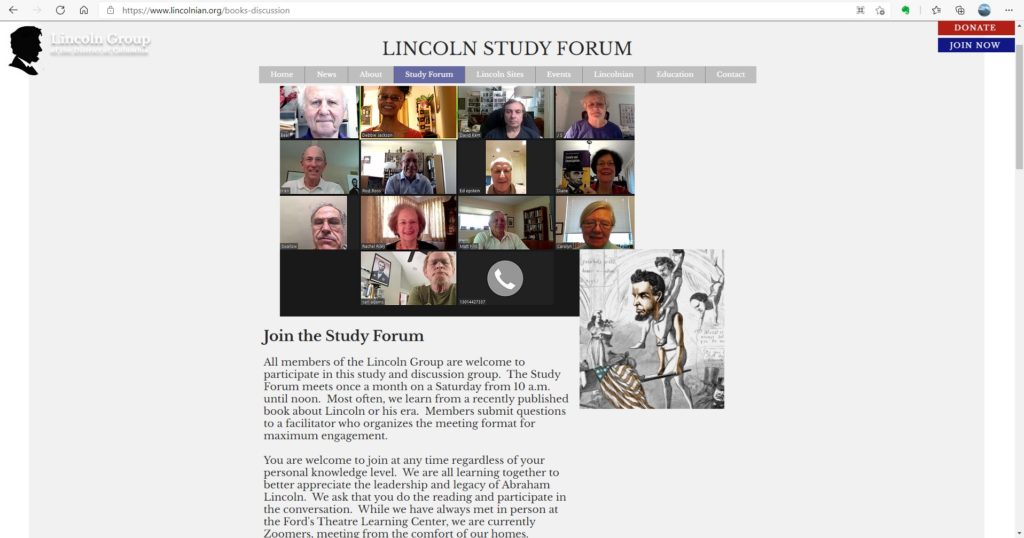
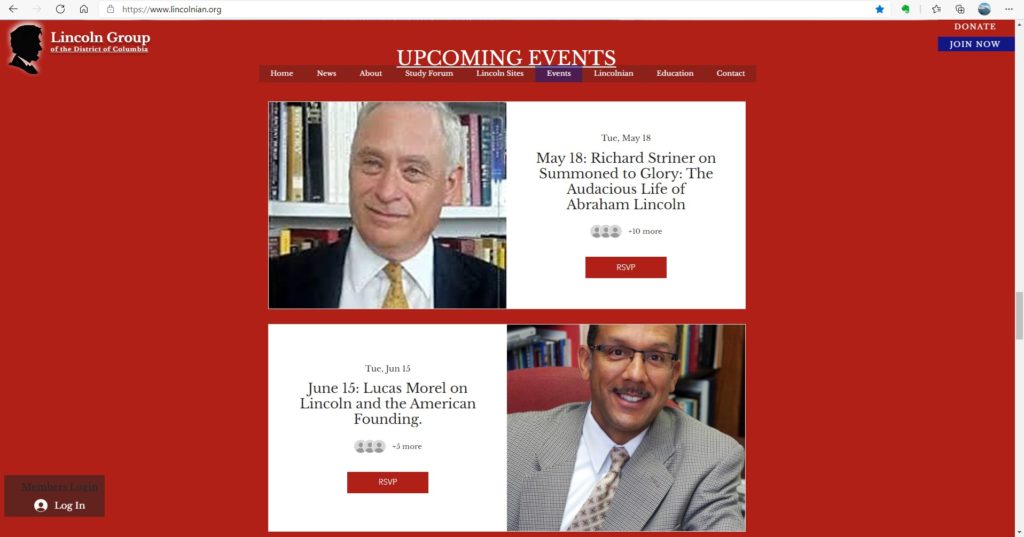
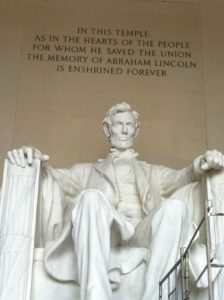 Periodically I check a website called
Periodically I check a website called 






